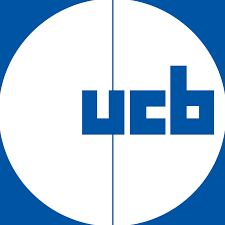Article
Bimekizumab Phase 3 Results Show Success in Treating Non-Radiographic axSpA
Author(s):
Promising results were announced by UCB after a Phase 3 study evaluated bimekizumab for non-radiographic axial spondyloarthritis and met all endpoints.

Bimekizumab has shown improved outcomes in patients with active non-radiographic axial spondyloarthritis (nr-axSpA). Regulatory applications for bimekizumab in axial spondyloarthritis are planned to be submitted by UCB in Q3 2022.
The BE MOBILE 1 study is now the second Phase 3 study that evaluated the drug in relation to axial spondyloarthritis and reported positive results. The study met the primary and secondary endpoints.
"Today's positive findings from the Phase 3 BE MOBILE 1 study provide clear evidence supporting bimekizumab in the treatment of nr-axSpA, and suggest that targeting IL-17F in addition to IL-17A may be a promising treatment approach for this painful, chronic rheumatic condition that often starts in young adulthood," Atul Deodhar, MD, MRCP, Professor of Medicine, Division of Arthritis and Rheumatic Diseases, Oregon Health & Science University, said in a statement.
BE MOBILE 1 Study
BE MOBILE 1 is the first evaluation of the drug’s efficacy and safety in adults with active non-radiographic axial spondyloarthritis.
The primary endpoint in this study was to achieve the Assessment of Spondyloarthritis International Society 40%(ASAS40) response at week 16, which set a high threshold of at least 40% improvement in patient-reported outcomes.
The assessment measured 4 domains for possible improvement: patient global assessment of disease activity, spinal pain, physical function, and inflammation.
Primary data were statistically significant and demonstrated a clinically meaningful improvement when compared with placebo.
Meeting the Secondary Endpoints
In addition to the promising data regarding the primary endpoint of the trial, all ranked secondary endpoints were achieved as well.
The Bath Ankylosing Spondylitis Disease Activity Index (BASDAI) was utilized to measure signs and symptoms of the disease at week 16 for a secondary endpoint, and found that patients treated with bimekizumab achieved significant improvements compared with placebo.
Additionally, patients who were treated with the drug also achieved ASAS partial remission (PR) and Ankylosing Spondylitis Disease Activity Score (ASDAS) Major Improvement (MI), as well as the nocturnal spinal pain score.
Moving Forward
The top-line results of the phase 3 study are supported by the preceding results from the BE MOBILE 2 study on ankylosing spondylitis, reported in December 2021. Therefore, indicating potential for bimekizumab to be recognized across the full spectrum of axSpA.
The safety profile of bimekizumab was consistent with safety data found in previous studies. Currently, the drug has not been approved for treating nr-axSpA or ankylosing spondylitis by any regulatory authority worldwide.
Regulatory applications for bimekizumab are planned to be submitted by UCB for treatment of axSpA in the US and the European Union in Q3 of 2022.
"We're excited to share top-line findings from the second Phase 3 study in our clinical program of bimekizumab in axSpA. These positive results, together with the previously reported top-line data from the BE MOBILE 2 study, support the clinical potential of bimekizumab to improve patient outcomes across the full spectrum of axSpA, including both nr-axSpA and ankylosing spondylitis," Emmanuel Caeymaex, Executive Vice President, Immunology Solutions and Head of U.S., UCB said in a statement.




